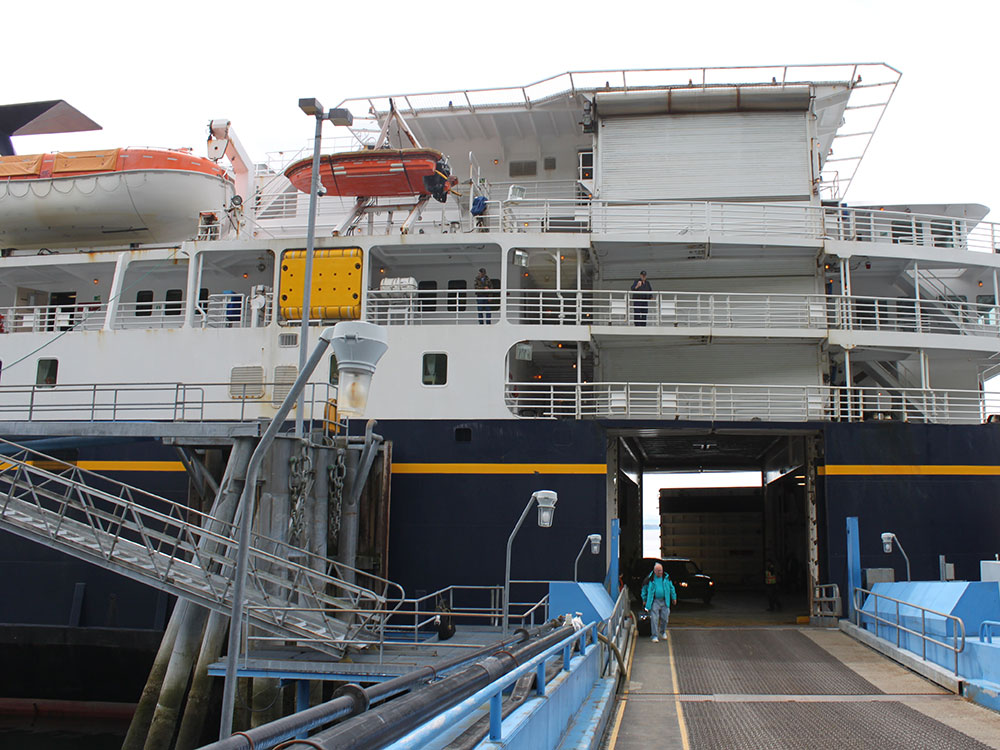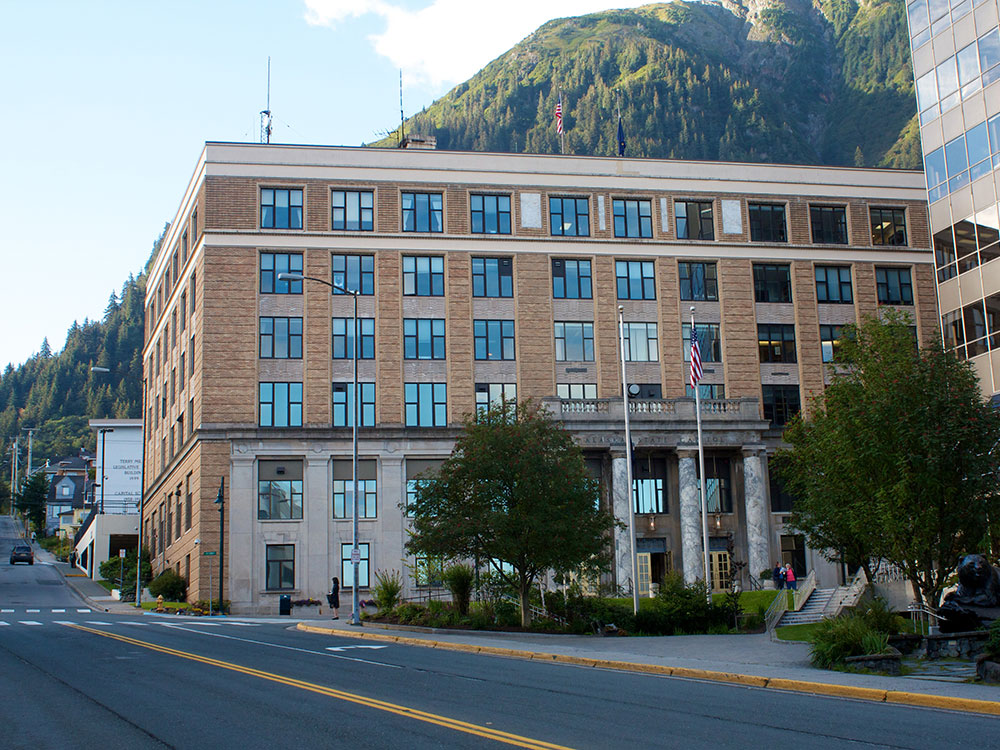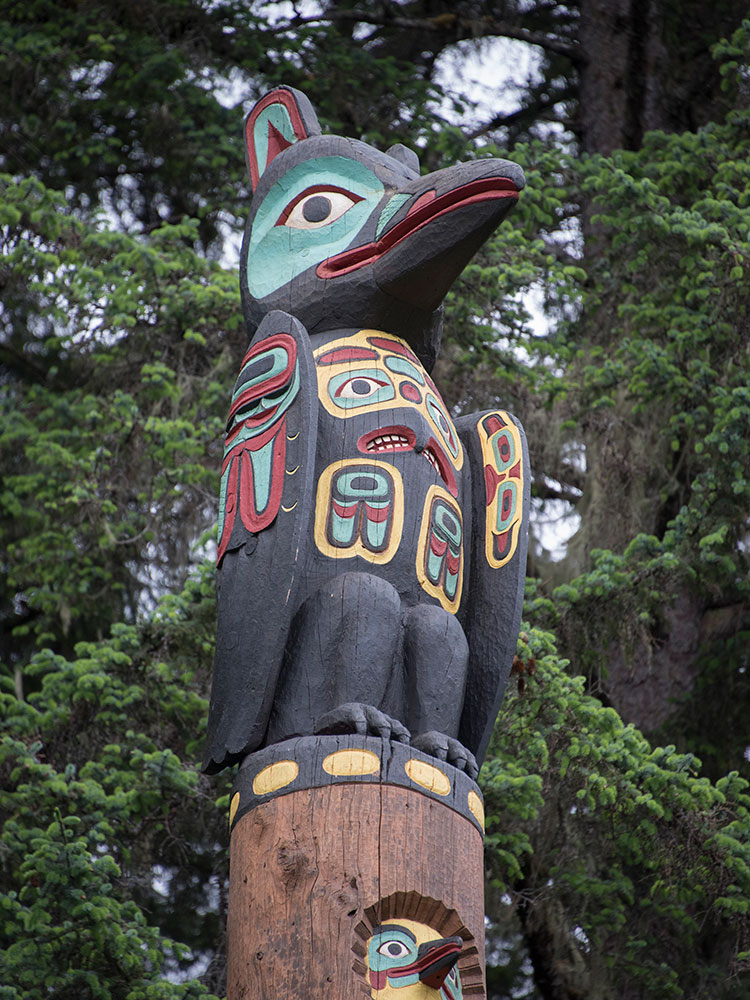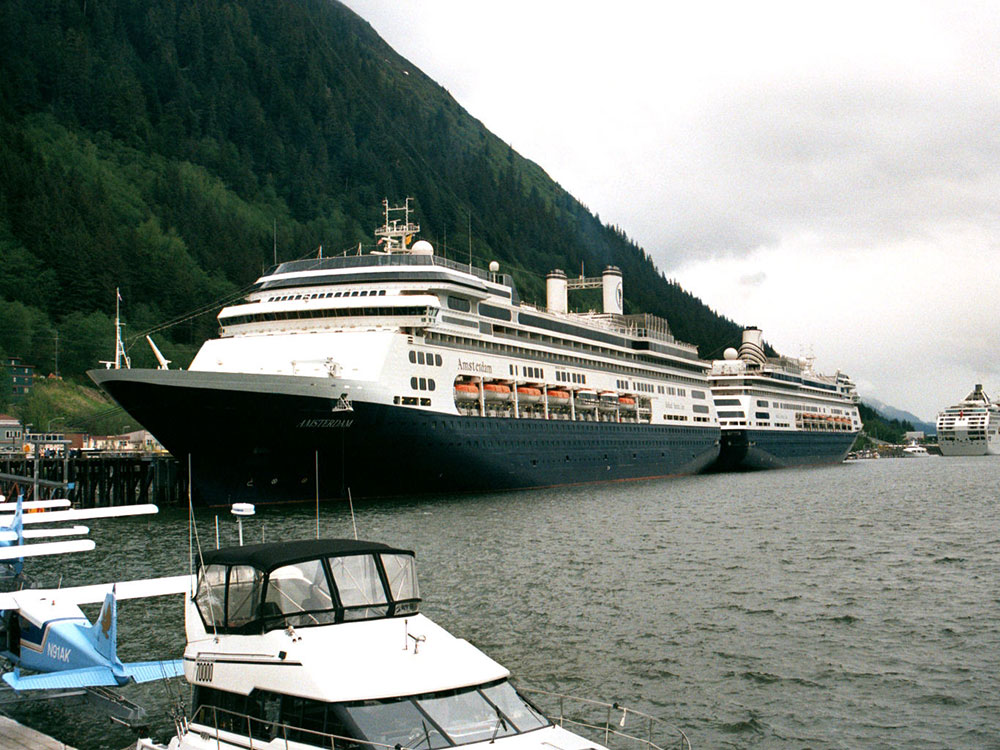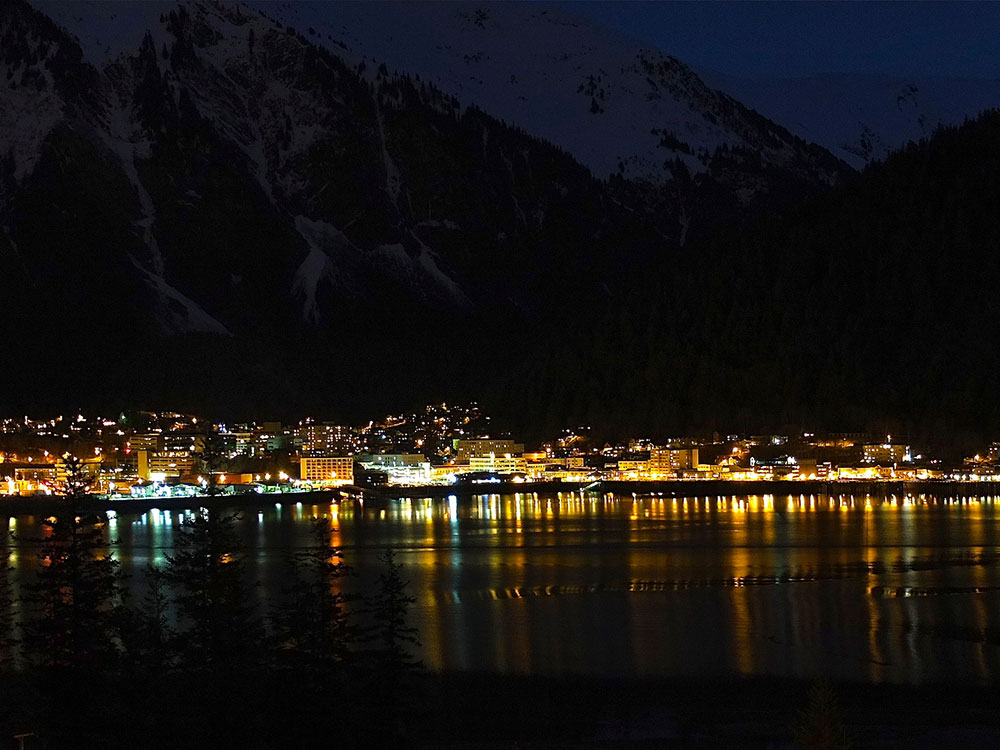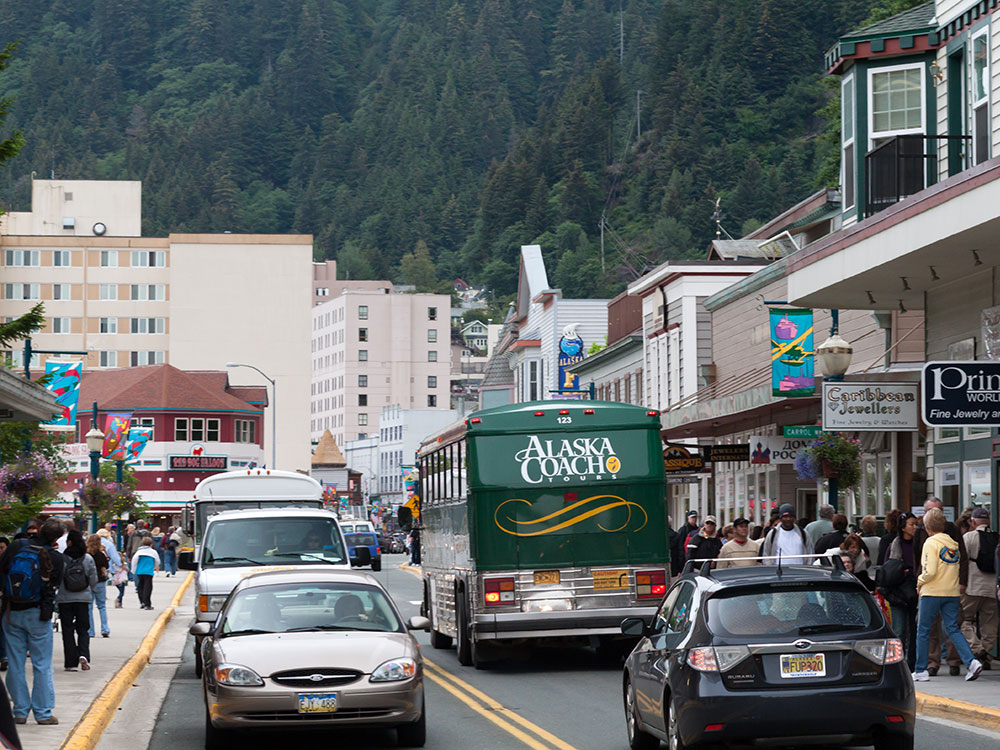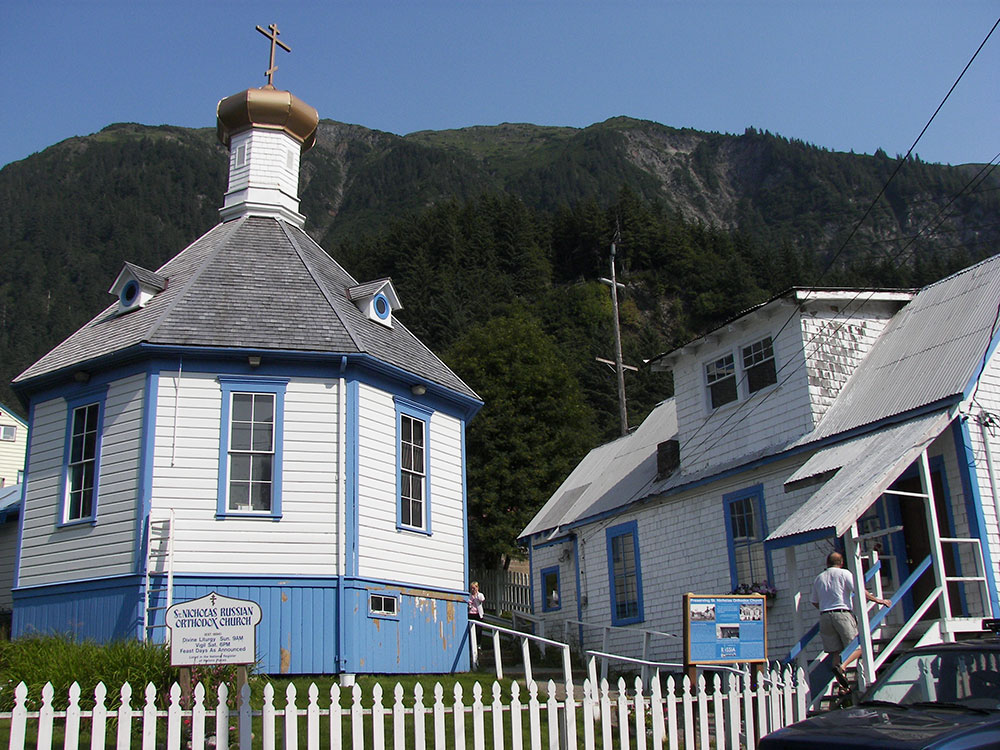General Information
How to Get There
Overview
Juneau (Tlingit: Dzánti K'ihéeni) is the capital city of the state of Alaska. Located in the Gastineau Channel and the Alaskan panhandle, it is the second-largest city in the United States by area. Juneau was named the capital of Alaska in 1906, when the government of what was then the District of Alaska was moved from Sitka as dictated by the U.S. Congress in 1900.
Downtown Juneau is nestled at the base of Mount Juneau and across the channel from Douglas Island. It is the second-most populous city in Alaska after Anchorage. Juneau experiences a daily influx of roughly 6,000 people from visiting cruise ships between the months of May and September.
The city is named after a gold prospector from Quebec, Joe Juneau, though the place was for a time called Rockwell and then Harrisburg (after Juneau's co-prospector, Richard Harris). The Tlingit name of the town is Dzántik'i Héeni ("Base of the Flounder's River," dzánti 'flounder,' -k'i 'base,' héen 'river'), and Auke Bay just north of Juneau proper is called Áak'w ("Little lake," áa 'lake,' -k' 'diminutive') in Tlingit. The Taku River, just south of Juneau, was named after the cold t'aakh wind, which occasionally blows down from the mountains.
Juneau is unique among the 49 U.S. capitals on mainland North America in that there are no roads connecting the city to the rest of the state nor North America. Honolulu, Hawaii, is the only other state capital not connected by road to the rest of North America. The absence of a road network is due to the extremely rugged terrain surrounding the city. This in turn makes Juneau a de facto island city in terms of transportation, since all goods coming in and out must go by plane or boat, in spite of the city's being on the Alaskan mainland. Downtown Juneau sits at sea level, below steep mountains about 3,500 to 4,000 feet (1,100 to 1,200 m) high. Atop these mountains is the Juneau Icefield, a large ice mass from which about 30 glaciers flow; two of these, the Mendenhall Glacier and the Lemon Creek Glacier, are visible from the local road system. The Mendenhall glacier has been gradually retreating; its front face is declining in width and height.
The Alaska State Capitol in downtown Juneau was built as the Federal and Territorial Building in 1931. Prior to statehood, it housed federal government offices, the federal courthouse and a post office. It also housed the territorial legislature and many other territorial offices, including that of the governor. Today, Juneau remains the home of the state legislature and the offices of the governor and lieutenant governor.
The City and Borough of Juneau includes Douglas Island, a tidal island to the west of mainland Juneau. Douglas Island can be reached via the Juneau-Douglas Bridge.
Juneau, Alaska, shares its eastern border with the Canadian province of British Columbia. It is the only U.S. state capital to border another country.
Alaska State Parks maintains the Juneau Trail System, a series of wilderness trails ranging from easy to extremely difficult.
Juneau is not directly accessible by road, although there are road connections within the borough to rural areas. Primary access to the city is by air and sea. Cars and trucks are transported to and from Juneau by barge or the Alaska Marine Highway ferry system.
The state-owned ferry system is called the Alaska Marine Highway. The Southeast ferries connect Juneau with 13 other cities in Southeast Alaska and other destinations north via Whittier, as well as with the continental road system in Bellingham, Washington, and Prince Rupert, British Columbia. Going north, the ferries dock in Haines and Skagway connecting to the Alaska Highway via Whitehorse, Yukon. In addition to the traditional Alaska Marine Highway ferries, high-speed catamarans known as "Fast cats" connect Juneau with Haines and Skagway (91 miles (146 km)) in half the time of the traditional ferries, needing around four hours' travel time.
Juneau International Airport serves the city and borough of Juneau. Alaska Airlines services the airport year round, operating upwards of 11 daily departures. Alaska Airlines serves Juneau and other Southeast Alaska villages via "Milk Run" flights which make multiple stops to and from Seattle or Anchorage. Alaska also connects Juneau to other cities in the country through connections in Seattle or Anchorage.
In the summer, Delta Air Lines serves Juneau from its major West Coast hub in Seattle, providing global service to and from Southeast Alaska without having to switch air carriers.
There are no roads connecting Juneau to the rest of North America, although cars can use the ferries to connect to the road network. Juneau is one of only four state capitals not served by an Interstate highway (the others being Dover, Delaware, Jefferson City, Missouri, and Pierre, South Dakota).
This article uses material from the Wikipedia article "Juneau, Alaska", which is released under the Creative Commons Attribution-Share-Alike License 3.0
Featured Locations and Trails
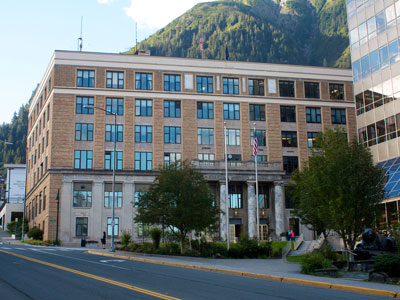
Jay Galvin from Pleasanton, CA, USA, CC BY 2.0, via Wikimedia Commons; Image Size Adjusted
-400.jpg)
Jay Galvin (jay galvin), CC BY 2.0, via Wikimedia Commons; Image Size Adjusted
